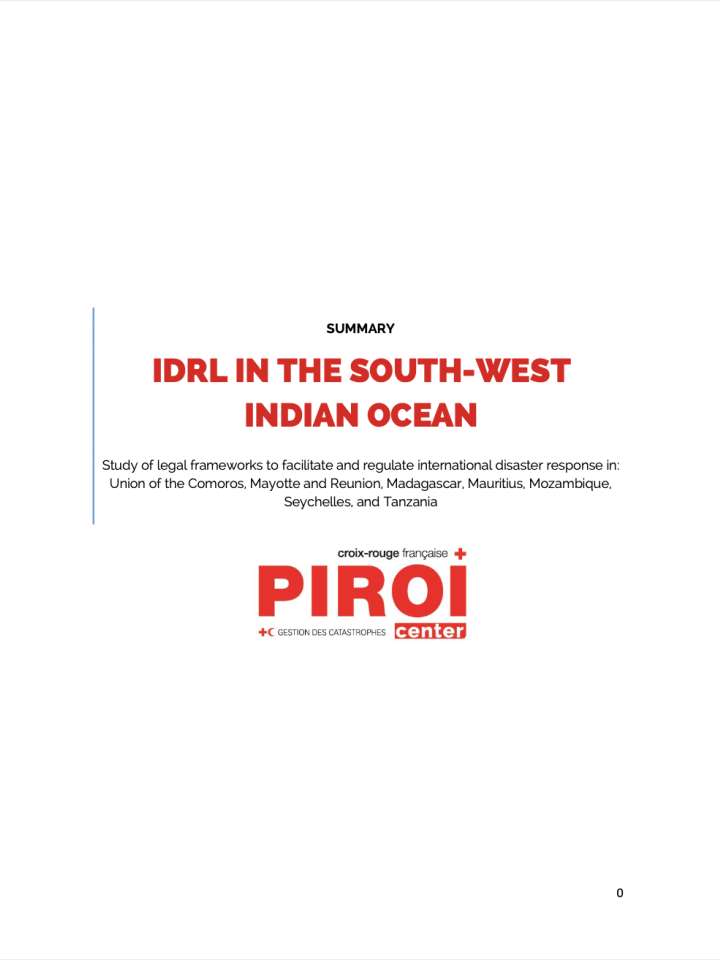International Disaster Law in the South-West Indian Ocean
This study aims to present the legal aspects related to involving various national and international disaster management stakeholders in the countries where the Indian Ocean Regional Intervention Platform (PIROI) operates. As such, the study selected instruments key to building the international relief regime most relevant to PIROI's activities, and as applied to the major phases of international relief. These are all part of the relationship between the recipient government and the assisting state, and involve distinct and interconnected legal aspects. In addition, the study of national regulatory frameworks is based on five dimensions that form the structure of analysis:
- Presentation of DRM political and legal frameworks;
- Analysis of the coordination structure;
- Declaration of a state of emergency and calls for international aid;
- Coordination of emergency response; and
- Border regulations.
The paper finds that there is firstly a certain disparity in the integration of the guidelines into national regulatory frameworks; secondly, difficulties in the application of the emergency procedures developed; lastly, a general lack of assimilation of the standards by the stakeholders involved. Thus, while it is important to develop robust standards to reduce the impact of disasters, at the same time it is essential to work to ensure that on the one hand, they are disseminated and assimilated by all stakeholders involved, and that on the other hand, they are adhered to and consolidated as lessons are learned from previous emergencies.
Explore further
